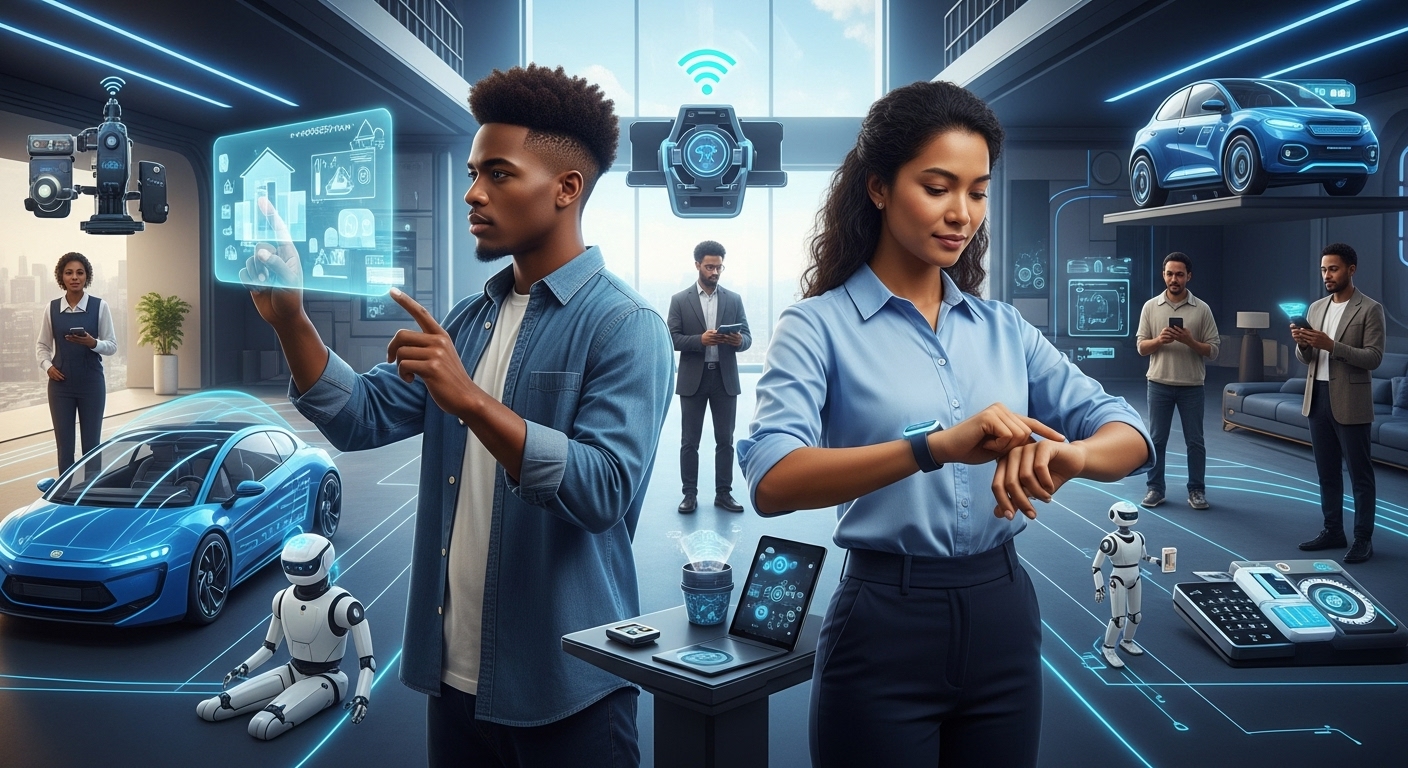From its humble beginnings as a bulky “brick” in 1973, the “mobile” device has undergone a truly astonishing metamorphosis. What started as a simple tool for voice communication has evolved into a pocket-sized supercomputer, fundamentally reshaping how we live, work, and interact with the world. Today, in mid-2025, mobile technology is not just pervasive; it’s the central nervous system of our digital existence, continuously evolving with breakthroughs in AI, form factors, and connectivity.
From 1G to 5G and Beyond: A Generational Leap Continues
The story of mobile is largely the story of cellular network generations:
- 1G (Early 1980s): Analog voice calls, limited capacity.
- 2G (Early 1990s): Introduced digital voice, enabling SMS and MMS.
- 3G (Early 2000s): Ushered in mobile internet access and early data services.
- 4G (Late 2000s): Revolutionized mobile connectivity with significantly higher speeds, paving the way for ubiquitous video streaming, rich mobile gaming, and the app economy.
- 5G (Late 2010s – Present): The current standard, 5G offers ultra-low latency, incredibly high speeds (up to 10 Gbps), and massive connectivity for billions of devices. It’s the backbone for future innovations like widespread IoT, advanced augmented reality (AR), and even autonomous vehicles. Research into 6G is already underway, promising even faster internet and the ability to connect vastly more gadgets, helping build smarter cities and facilitating truly real-time, immersive experiences.
The Smartphone Era: A World in Your Hand
The true turning point arrived with the advent of the smartphone. While earlier devices dabbled in smart features, Apple’s iPhone in 2007, followed closely by Google’s Android platform, ignited a revolution. These devices merged communication with powerful computing capabilities, high-resolution touchscreens, and, crucially, vibrant app ecosystems.
Today’s smartphones are marvels of engineering, packing multiple high-resolution cameras, powerful processors (often with dedicated AI chips), advanced biometric security, and an array of sensors into impossibly thin designs. They have become:
- Communication Hubs: Beyond calls and texts, they enable instant messaging, video conferencing, and global social media interactions.
- Personal Computers: Capable of handling complex tasks, from document editing to graphic design.
- Entertainment Centers: Streaming movies, playing graphically intensive games, and accessing vast libraries of music.
- Productivity Tools: Managing schedules, emails, banking, and facilitating remote work.
- Navigation Devices: GPS and mapping applications, now enhanced with AR features for real-time directions.
- Health and Fitness Trackers: Integrating with wearables and apps to monitor well-being, including continuous health tracking and personalized wellness recommendations.
- Portable Wallets: Mobile payment systems have become increasingly prevalent and secure.
Key Innovations and Market Dynamics in 2025
The mobile landscape in mid-2025 is characterized by several groundbreaking trends:
- AI-First Mobile Devices: Artificial Intelligence is now deeply integrated into the core functionality of smartphones. AI-powered apps anticipate user needs, personalize experiences (e.g., content curation, tailored interfaces), and perform tasks proactively. On-device AI processing via dedicated NPUs (Neural Processing Units) makes AI features faster, more private, and less reliant on cloud servers. This is transforming mobile photography (real-time optimization, advanced portrait effects, auto-video editing), security (behavioral authentication, advanced fraud detection), and virtual assistants (more conversational and context-aware). Leading flagship phones like the Samsung Galaxy S25 series and Google Pixel 9 series heavily emphasize their AI capabilities.
- Foldable and Rollable Screens Maturing: What was once a niche, experimental technology is now a refined, high-performance category. Foldable phones like the Samsung Galaxy Z Fold 7, Google Pixel Fold, OnePlus Open 2, and Honor Magic V3 offer the best of both worlds: a large tablet-sized display for multitasking or entertainment, coupled with the portability of a traditional phone. Hinges are stronger and more durable, flexible AMOLED screens are virtually crease-free, and designs are becoming slimmer. Rollable displays, while less common, offer even more dynamic screen expansion.
- Sustainable Mobile Technology: Environmental concerns are driving the industry towards more eco-friendly practices. Expect to see more phones with recyclable aluminum frames, vegan leather backs, and carbon-reduced packaging. Brands like Fairphone and Nokia are pioneering modular, repair-friendly designs to extend device longevity and reduce electronic waste. This commitment to sustainability is influencing consumer choice.
- Smarter Connectivity and Ecosystems: The widespread adoption of Wi-Fi 7 and the continued expansion of 5G+ networks deliver ultra-fast speeds and ultra-low latency, crucial for demanding applications like competitive mobile gaming and advanced AR experiences. Devices are also more seamlessly integrated into broader ecosystems (e.g., smart homes, wearables), with features like satellite connectivity emerging in flagship models for emergency SMS in remote areas.
- Enhanced Security and Privacy: With phones becoming central to our digital lives, biometric security (advanced facial and in-display fingerprint recognition) and multi-layered authentication are more sophisticated than ever. AI-powered security systems learn user behaviors to detect anomalies, while quantum encryption and confidential computing are being explored for future privacy enhancements.
The Mobile Universe: An Ever-Expanding Frontier
The mobile market continues to see robust activity. As of Q2 2025, Samsung leads global smartphone market share (20%), followed by Apple (16%), and Xiaomi (14%), with regional players like Motorola showing significant growth. Overall, global smartphone shipments grew by 2% year-on-year in Q2 2025, driven by renewed demand in developed markets.
The mobile phone has transcended its origins to become an extension of ourselves, an indispensable gateway to the digital world. As technology continues its relentless march forward, integrating AI, pushing form factors, and enhancing connectivity, the “mobile” will undoubtedly remain at the forefront, shaping our future in ways we can only begin to imagine.

